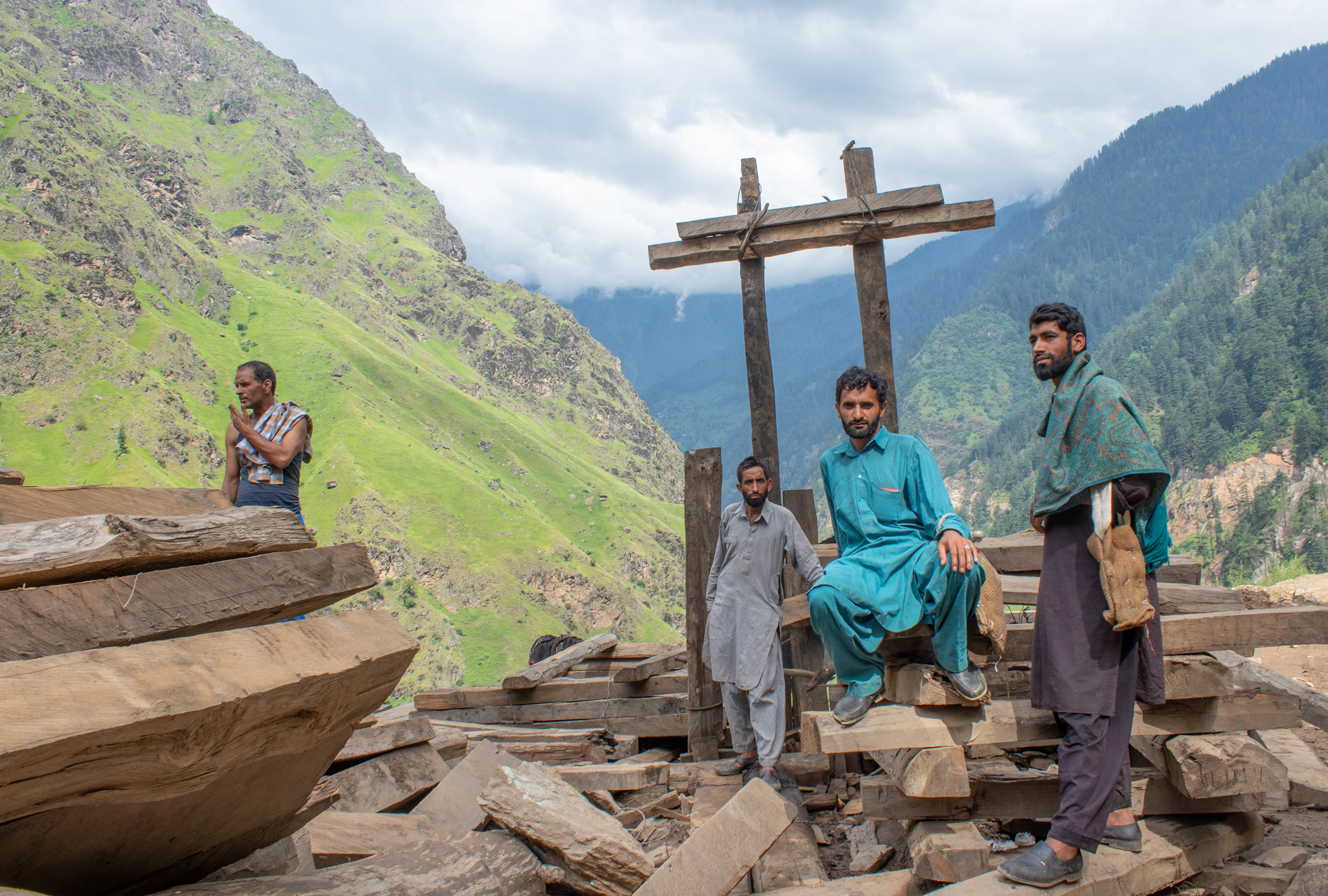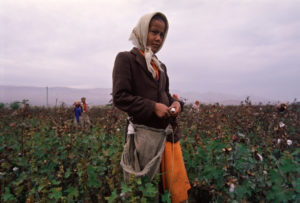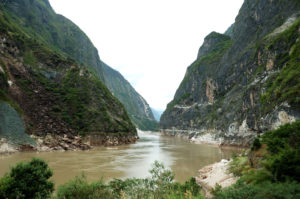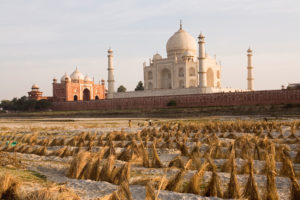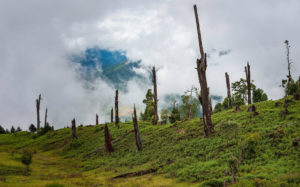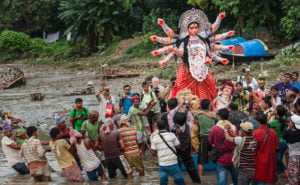Nearly 250 kilometres northeast of Jammu, the winter capital of Jammu and Kashmir, lies Kishtwar district. The Chenab river – one of the major tributaries of the Indus – flows through the mountainous region in the middle and outer Himalayas.
Known for its saffron farms and sapphire mining, Kishtwar is a region of dense forests and deep narrow valleys that make it a prime spot for hydroelectricity production.
The Chenab, which flows into Kishtwar from Himachal Pradesh and flows out to four other districts in Jammu and Kashmir before reaching Pakistan, has been at the centre of India-Pakistan bickering over hydro projects.
Under the 1960 Indus Waters Treaty, the three eastern rivers of the Indus system were allocated to India, while the waters of three western rivers, including the Chenab, were given to Pakistan. The treaty allows India to build dams without disrupting the water flow to Pakistan. But with the continuous hostility over Kashmir and the rescinding of the region’s semi-autonomous status in the summer of 2019, the conflict over water usage, especially on the Chenab, has escalated.
Now the Indian government is building seven new hydropower dams on the Chenab and its tributaries in Kishtwar district, with a total capacity of 5,190 MW.
Most of these projects have been fast-tracked as a result of the latest political developments in the region. But the human and environmental costs associated with these projects have largely missed public scrutiny.
Human cost
Isher Das was 21 when, in 1983, the Indian government commissioned the 390 MW Dul Hasti dam, some 10 kilometres downhill from the Kishtwar town, the headquarters of the district. He used to live in Lower Arzi village, which is about 200 metres upstream of the Dul Hasti dam site. Back then, India’s National Hydroelectric Power Corporation (now called NHPC) that was constructing the dam acquired a major part of his family’s land, whose agricultural produce was the only source of income for his father Nath Ram. The family never received compensation.
“During the construction phase, we also lost two of our houses due to frequent landslides,” said Das.
Ram spent most of his last days visiting different government offices to get compensation for the land and the house. He died in 2000.
It took his family 37 years to make the company acknowledge that their land was acquired and they were entitled to compensation. After his death, Das’s son, Vinay Kumar Dhar, ran from pillar to post – along with 30 other families. In 2017, they were compensated for the land, but not their houses.
Their joy was short-lived. The government was planning to build a powerhouse next to their village for Pakal Dul, another 1,000 MW dam on the Chenab river’s main tributary Marusudar at Drangdhuran village.
Whatever farmland was left was acquired for the new project. Newly-built houses developed cracks due to the regular blasting of the surrounding mountains to construct tunnels and install a concrete batching plant in the vicinity.
“We had no option but to leave that house and take a bank loan to build another one,” Dhar said.
Dhar is afraid that his family may have to migrate again as the government continues to build new dams in the region. Along with his family, nearly 20,000 people will be directly affected as a result of building the seven dams.
Pulling up the roots
Nearly 12 kilometres upstream of the Dul Hasti dam lies Pathar Nikki village, now the site for the 560 MW Kiru hydropower project, one of the seven.
Abdul Qayoom, a teacher, spent all his life in the village, until 2017. Then he and his six children were forced to vacate their home and give up their land for the construction of the Kiru dam, leaving them with no option but to rent a house in Kishtwar town.
He was paid compensation of INR 7 million (USD 95,000) for a house and a seven-acre farm. This is a substantial sum by Indian standards, but when he moved to the town, he found that it was not sufficient to buy a plot, let alone build a house.
The income that came from growing rice, maize, beans and wheat has also disappeared. “When I look back, I realise that other villagers and I made a big mistake by letting them take over our village,” Qayoom said.
“I can still teach and make a little but many other villagers don’t have any skills except farming and without land they can’t do anything.”
The government had promised to give jobs to each household, provide skill training and cover the cost of educating the children. But, according to Qayoom, “They didn’t keep their promise. Everything seems gone now.”

“Murder of the region”
Environmental activists and experts have raised serious concerns over what they call rampant construction of “bumper to bumper” dams. These, they say, are a threat to the delicate ecology of the region, including forests, flora and fauna. The activists believe that it will have grave implications for the region in both the short and the long run.
“Simply put, this is murder of the region and the river. They are wiping out the river,” said Vimal Bhai, an environmental activist.
Bhai further said that such infrastructure projects in Jammu and Kashmir often get quick approval without paying heed to the environmental consequences because of India-Pakistan tensions.
Himanshu Thakkar, the coordinator of the South Asia Network of Dams, Rivers and People said, “There was never a participatory and informed decision-making when it comes to constructing big dams in Kashmir.”
He said he believes the continuous construction of dams at such a large scale will only increase the disaster potential that includes flash floods and landslides.
Earthquake risk
Earthquakes are also a concern. Considering the high seismicity in the region, G.M. Bhat, a geologist and earthquake researcher in Jammu University, has been flagging the issue of constructing dams, but to no avail.
“We have been urging them not to do it, considering the fact Kishtwar is an active seismic zone,” Bhat said.
A 2018 study conducted by seismologists from the Bangalore-based Jawaharlal Nehru Centre for Advanced Scientific Research forecast that an earthquake of magnitude of 8.5 or more is overdue in these parts of the Himalayas.
In 2010, Bhat was part of a team set up by the Ministry of Human Resource Development to study frequent landslides in the region. “We made a passing reference in the report that it (dams) could cause earthquakes in the region similar to ones caused by Koyna dam,” he said.
Located in Maharashtra, the 1967 Koyna earthquake that killed nearly 200 people is often the most cited example of reservoir-induced seismicity.
According to Bhat, the majority of the dams in Kishtwar are either on or around fault lines in the earth’s crust and some of them will have reservoirs.
Reservoirs create risks apart from earthquakes. In February 2009, a massive landslide washed out a stretch of nearly 150 metres of a key road at Assar in Doda district, leaving the region without any connectivity for nearly a month. A study in which Bhat was a co-author claimed that the landslide was connected to the reservoir of the nearby Baglihar dam.
Project developers have been pointing out that some of the hydropower projects are run-of-the-river schemes which do not hold back the water in a reservoir behind a dam. However, run-of-the-river schemes do involve the construction of a dam that channels the water into a settling tank, usually built inside the hill that borders the river. From the settling tank, the water is led through a pipe built in a gentle slope for around 8-10 kilometres, before it is dropped vertically to turn turbines and thus produce electricity. The water is then led back to the river.
For Vinay Dhar, the construction of dams in the region not only took away his land and home but also damaged his relationship with nature. “Our green fields, fresh air, rainfall, fresh water, all have been affected,” he said. “We were linked to nature but these dams have thrown us far from it.”
